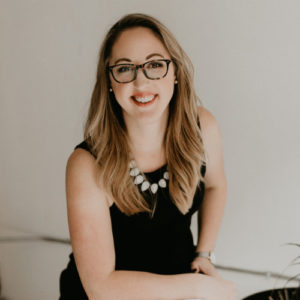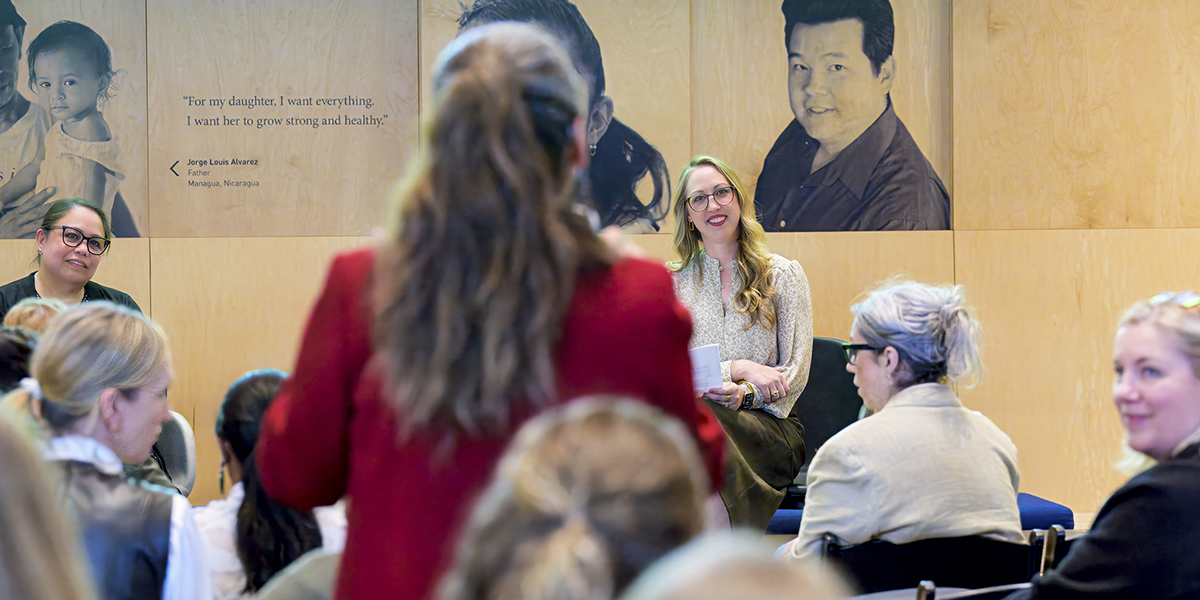Written by Brea Starmer – Photo by Sammie Vasquez
The higher you fly, the harder you fall. As I studied my reflection in the bathroom mirror, I wondered how I’d gotten here. From college, I launched into one of the most iconic tech companies in the world. My career hops since then had been intentional, even if they didn’t always turn out like I planned.
I held up my phone and snapped a picture – will this black dress and scarf disguise my baby bump? I snapped another, this time showing it off – nope.
In the pictures I’m smiling, but in reality, it was my greatest moment of fear.
Seven months pregnant. Laid off. Excluded, questioned, judged at every turn. My work ethic held no sway with those who saw me as a risky hire because I would also be a mother. Did I have any options?
The role of fear in our lives
Fear is an unavoidable part of life. Even that sentence betrays the negative connotation. But in reality, fear is one of our greatest survival mechanisms, protecting us from physical or emotional danger by giving us pause before our brains have even processed a conscious thought.
Fear is inherently neutral, but how we respond gives it power in one of two ways: as a blocker or as a motivator.
Fear as a blocker is what ignites our fight, flight, or freeze instinct. This is where the pause comes in. However, if we stop there, fear can paralyze further progress.
Fear as a motivator drives us to analyze and refine how we think and act in order to move beyond the source of our discomfort. Positive action as a result of fear is courage.
In the words of feminist icon Gloria Steinem, “being brave is not being unafraid, but feeling the fear and doing it anyway.” She goes on to advise that “when you feel fear, try using it as a signal that something really important is about to happen.”
I had known fear before that moment in the bathroom. Each step of my career had been marked by circumstances that gave pause and prompted evaluation. But this was different. I couldn’t work harder or shift out of it. I needed to bear through with courage because something really important was about to happen.
Fear is the only avenue to courage
To reframe fear as a tool rather than something to be avoided is a powerful mind shift. When we view courage as an outcome of our response to fear, it takes the power away from the thing you’re up against and returns agency to you.
The way we respond to moments of fear cumulates in our experience and shapes the way we respond to challenges going forward. Renowned vulnerability expert Brene Brown describes courage as “a habit, a virtue: You get it by courageous acts. It’s like you learn to swim by swimming. You learn to courage by couraging.”
Practicing courage builds resilience. Persevering through challenges, fears, and failures builds your endurance for the next time you face something similar.
Our greatest adventures lie at the threshold of fear and courage. Fear stops us from continuing in foolishness. Courage moves us toward the maybe-better future.
The cornerstone of my maybe-better future began as a stop-gap. Unable to land a full-time position, I convinced a few teams to hire me as a consultant for a few months. I hustled 60 hours per week until my son was born, saving enough to pay myself 11 weeks maternity leave. Independent consulting was entirely new territory for me, but vulnerability is the birthplace of innovation, and I was at the beginning of a lifechanging discovery.
The role of values
Looking back, what allowed me to choose courage was getting clear on my values. So much of our effort is spent reacting to what others think we should do and be. In my season of pause, I spent a lot of time reflecting on what it was that I valued. Not the expectation others had of me – but rather, the things that mattered most to how I operated in the world.
What surfaced were three guiding values: stewardship, wired for impact, and intentional community. These became my “fearless because” manifesto, the reasons I chose to show up authentically and act courageously despite my fear.
As Audre Lorde put it, “when I dare to be powerful – to use my strength in the service of my vision, then it becomes less and less important whether I am afraid.” In other words, when your values transcend your circumstances, fear fails to become a blocker. Instead, your values help focus your gaze on a course of action and do hard things because you know with certainty that what you want is on the other side.
After my son was born, I chose to work 25 hours per week in order to spend more time with my family. In that season, I realized how much consulting opened up for me both professionally and personally, and I wanted to teach people to work this way. Experience building my courage-muscle gave me the confidence to take another risk in building a company centered on my three ‘fearless because’ values.
Steps toward fearlessness
Fearlessness is a pursuit, not a destination. Courage is how you respond when faced with circumstances that provoke fear. These four steps will help you make a practice of the pursuit of fearlessness.
- Define your values framework – First, determine what is important to you. Use this to anchor yourself in times of fear and direct your energy in times of courage.
- Reframe fear as a tool for growth – Use fear as a cue to pause and become completely present in the moment. Identify and investigate the cause of your discomfort. How do you need to grow?
- Nourish your community – You may think that “asking for help” is the right next step. But it is much more fruitful to first consider what you can give to nourish relationships within your community, your network, and your peers. Growth comes from giving.
- Act with courage – Guided by your values, with fear reframed as a tool and your community by your side, create a plan to move out of your present discomfort toward a goal or outcome, then take the very first steps.
Remember that every push through fear makes the path toward fearlessness more passable the next time. Fear is not an endgame, rather a journey with many lessons along the way.

Brea Starmer is the Founder of Lions & Tigers. A leader in the space for 15 years, Brea started her career at Microsoft in partner channel marketing and business strategy. She later grew a global staffing firm from startup to 120 consultants. Brea’s work has been featured on King5, in the Puget Sound Business Journal, and in 2020 she was named Geekwire’s Geek of the Week. An alum of Washington State University and the 8th female student body president, Brea currently sits on the Marketing Advisory Board at the Carson College of Business. She has spoken, taught and trained audiences at Microsoft, Google, for the Seattle Together Digital Chapter, and for Women in Cloud.








0 Comments